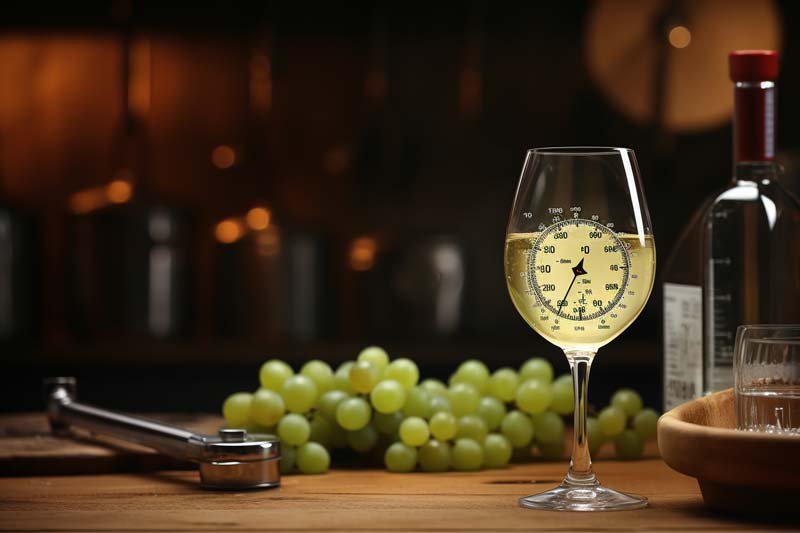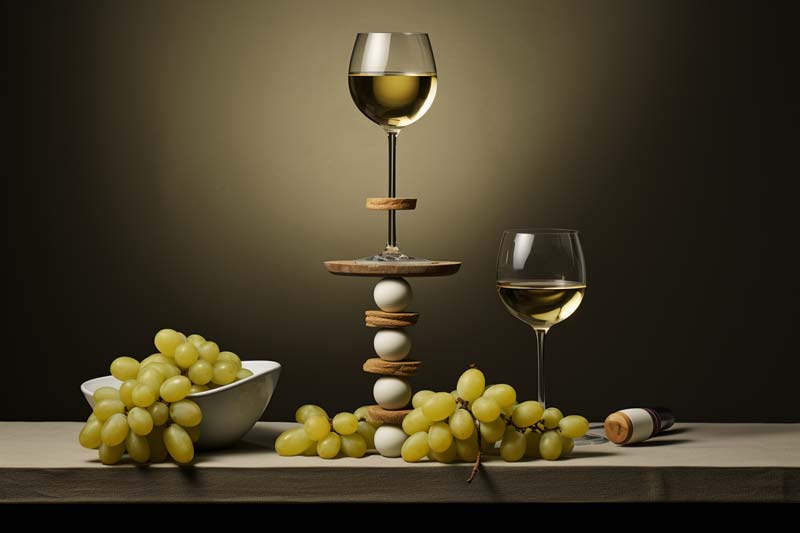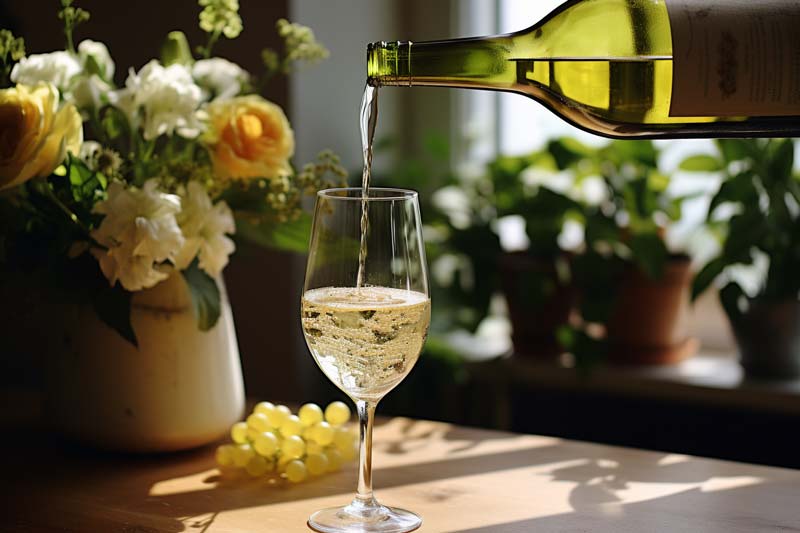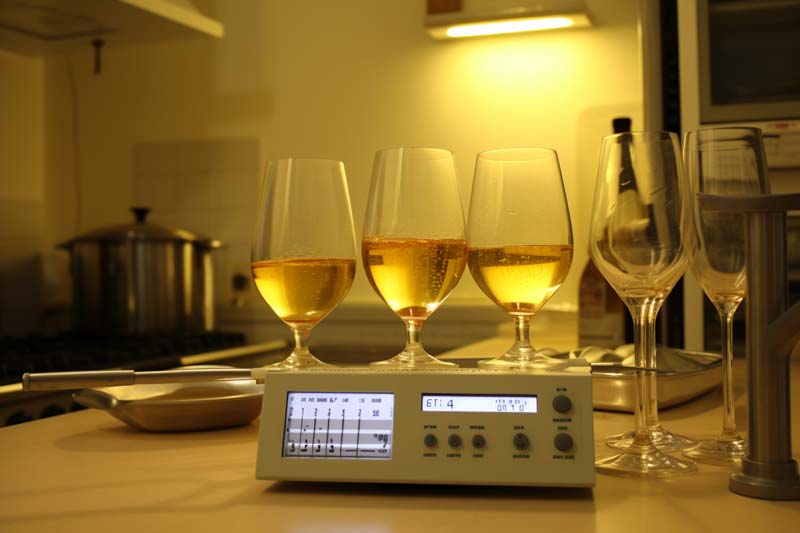Picture this: it’s a warm summer evening, and you’re gathered with friends on a sun-drenched patio.
The grill is fired up, laughter fills the air, and a bottle of crisp white wine glistens on the table, beckoning you to indulge in its refreshing embrace.
But before you dive into that chilled glass, let’s talk about an essential detail: the ideal wine fridge white wine temperature.
My fellow vino-loving adventurers, the devil is in the details, and when it comes to white wine, finding that perfect temperature is the key to unlocking its full potential.
So, grab your glass, and let’s embark on a journey through cool flavors and refreshing temperatures as we explore the secrets to achieving the ideal conditions for your white wine in that glorious wine fridge of yours.
Table of Contents
Getting It Right from the Start

Before we dive into the nitty-gritty of white wine temperature, let’s uncover a few golden rules that will ensure you’re on the right track from the get-go.
Rule #1: Cooler Isn’t Always Better
You might think that the colder, the better when it comes to white wine, but hold your horses, my friend.
While it’s true that white wines have a wine serving temperature that is generally cooler than their red counterparts, going too cold can mask delicate flavors and leave you with a less enjoyable experience.
To strike the perfect balance, make sure to chill your white wines, but aim for a temperature range that allows their flavors to shine.
Avoid serving them straight from the fridge, as the extreme cold could mute their complexities.
Rule #2: Varietals Matter
White wine is not a monolithic entity; it encompasses various grape varieties, each with its own unique characteristics and temperature preferences.
So, when it comes to storing and serving white wine, it’s essential to consider the varietal.
Crisp and aromatic whites, like Sauvignon Blanc or Pinot Grigio, tend to thrive at cooler temperatures, enhancing their zesty and vibrant qualities.
Fuller-bodied whites, such as Chardonnay or Viognier, benefit from slightly warmer serving temperatures to bring out their richness and complexity.
By paying attention to varietals, you can ensure that each white wine is served at its optimum temperature, allowing you to savor its true nature and revel in its nuances.
Proper Storage by Type
Now that we understand the importance of getting the temperature right for white wine let’s dive deeper into how to properly store and chill different types of white wine.
After all, you wouldn’t want to lose a bottle’s potential because of improper storage, would you?
Chillable Whites: A Balancing Act

Ah, chillable whites – those delightful, light-bodied wines that are perfect for easy sipping on a hot summer day.
These wines, like Riesling or Muscadet, thrive at cooler temperatures that preserve their refreshing qualities.
For chillable whites, aim for a range of around 45°F to 50°F (7°C to 10°C).
This slightly cooler temperature allows their vibrant citrus and floral aromas to blossom and their crisp acidity to shine.
But remember, my friends, don’t go too cold; you want to maintain that delicate balance and preserve the wine’s natural aromas and flavors.
Dry Whites: The Cooler Side
Moving on to the dry whites, such as Sauvignon Blanc or Pinot Grigio, we venture into a slightly cooler temperature range.
Dry whites typically thrive at temperatures between 50°F and 55°F (10°C to 13°C), allowing their zesty flavors and vibrant acidity to take center stage.
By chilling these wines a tad more, you can enhance their refreshing qualities and provide a crisp and invigorating experience.
The cool temperature helps to balance any residual sweetness and brings out the grape’s pure essence.
So, my fellow wine enthusiasts, when it comes to storing and chilling dry whites, remember to keep it on the cooler side to fully appreciate their vibrant and mouthwatering charm.
Tweaking for Optimal Enjoyment

Now that we have a general understanding of the ideal temperature to degrees for different types of white wine, let’s explore a few additional golden rules that can further enhance your tasting experience.
Rule #3: Give ‘Em Time to Adjust
White wines can be a bit sensitive, my friends.
They need some time to adjust to the ideal drinking temperature once you take them out of the fridge.
So, when you remove a bottle from the wine fridge, don’t rush into pouring it right away.
Instead, let the wine sit on the counter for a few minutes, allowing it to gradually warm up to its perfect serving temperature.
This brief period of adjustment ensures that you experience the wine’s full range of flavors and aromas.
Rule #4: Experiment with Temperature

While we’ve delved into the optimal serving temperatures for white wine, it’s important to remember that personal preference plays a significant role in the ultimate enjoyment of your favorite bottle.
So, feel free to experiment with wine storage temperature variations within the recommended ranges.
Some wine lovers might prefer their Sauvignon Blanc a touch cooler at 48°F (9°C), while others might prefer a Chardonnay at a slightly warmer 53°F (12°C).
It’s all about finding what tickles your taste buds and makes your heart sing.
A dual zone wine chiller may be an investment to consider, as well.
A Note on Rosé
Ah, the delightful and versatile world of rosé.
While not technically a white wine, rosé can benefit from some temperature expertise as well.
For a crisp and refreshing rosé, aim for temperatures similar to those of chillable whites, around 45°F to 50°F (7°C to 10°C).
This temperature range preserves the wine’s delicate fruitiness and subtle floral notes, allowing you to fully enjoy its vibrant and balanced qualities.
Rule #5: Keep an Eye on Fluctuations
As much as we’d like our wine fridges to maintain a constant temperature, the reality is that minor fluctuations can occur.
These fluctuations, whether from power outages, temperature variations in the surrounding environment, or even frequent door openings, can affect the wine’s integrity and overall enjoyment.
To combat this, make sure your wine fridge is set to maintain a stable temperature within the recommended range for white wines.
Additionally, try to minimize fluctuations by avoiding excessive door opening and closing, keeping the room temperature around the wine fridge consistent, and investing in a model with advanced temperature control features if possible.
White Wine Temperature Final Thoughts
By keeping a watchful eye on temperature fluctuations, you can ensure that your white wines are stored and served in optimal conditions, guaranteeing a delightful and refreshing drinking experience every time.
As our expedition through the golden rules of white wine temperature comes to a close, I hope you now possess the knowledge and confidence to create the perfect environment for your beloved white wines.
Remember, my dear oenophiles, the joy of white wine, or even red wine, lies not only in the liquid within the bottle but also in the care and consideration we give to its storage and preparation.
Cheers to the art of temperature and the refreshing pleasures that await within each glass!